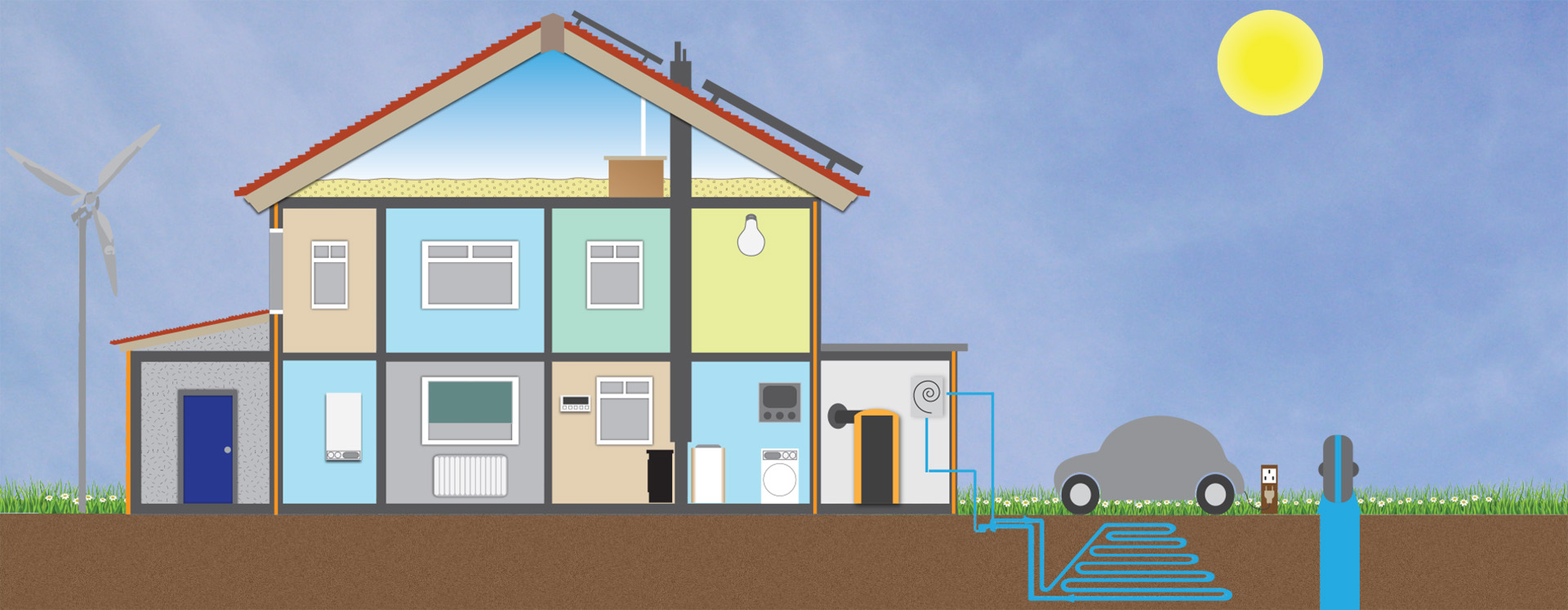 A solar panel is made of two different materials, one side with a negative charge and the other with a positive charge. When sunlight hits the panel the negative side becomes more negative and the positive side becomes more positive. A barrier between the two layers stops the charge flowing within the panel directly from one layer to the other but it will flow through an electric circuit, such as the national electricity grid, that has been connected to the panel.
A solar panel is made of two different materials, one side with a negative charge and the other with a positive charge. When sunlight hits the panel the negative side becomes more negative and the positive side becomes more positive. A barrier between the two layers stops the charge flowing within the panel directly from one layer to the other but it will flow through an electric circuit, such as the national electricity grid, that has been connected to the panel.
On or off grid solar
Grid connected solar PV is the most common type of solar installation and requires some extra features before the panels can be plugged into the grid. Solar panels generate direct current (DC) but the national grid and most electronic gadgets and appliances use alternating current (AC). Solar generated electricity must be converted to AC before it can be used in a building or be exported to the national grid. This is achieved with an inverter; inverters take in DC electricity and output AC that is ready for use in the national grid.
The inverter will only function when it detects electricity from the national grid, so in a power cut the solar panels will not generate any electricity; this is to protect linesmen who might be working on lines when power is down. A generation meter is also required which clocks up the total amount of electricity generated – this is the number upon which feed-in tariff payments are based. On larger systems an export meter is also required.
Off grid systems are not connected to the national grid, this might be because the system is too far from the national grid and new cabling will be too expensive or the owners prefer it this way. The overall cost of off grid systems is higher than grid connected systems because battery banks and other electronic equipment are needed to allow for insufficient light conditions such as night time.
Planning
Domestic installations on a house are classed as permitted developments so do not need planning permission but restrictions do apply, such as in conservation areas or on listed buildings. Installations on non-domestic buildings are subject to different planning restrictions and considered on a case-by-case basis, as are ground mounted systems.
Limitations
Direct sunlight is required over the whole of each panel for them to function efficiently, shading of a portion of some panels can cause the power output of the whole panel to drop. Solar PV does operate in diffuse lighting conditions (grey sky), but outputs are lower. Ideally the panels should be facing between SE and SW.
The panels are not currently cost effective on their own, and are dependent on a feed-in-tariff, rates for which are gradually being reduced by the government for newly installed systems. Panel prices are also coming down.
Free Solar
WREN are taking names of homeowners interested in FREE PV and are working towards setting up a scheme to provide this offer.
Summary
- Solar PV panels (not to be confused with Solar Thermal Panels) generate electricity during sunlight hours.
- They still generate on a cloudy day, but less than they would in direct sunshine.
- They can be run on or off grid.
- They work best on a roof that faces directly south, or between a south-west/south-east axis.
- Shading part of a panel greatly reduces its overall efficiency.
- You will not need planning permission on a domestic building but special rules do apply for conservation areas and listed buildings.

